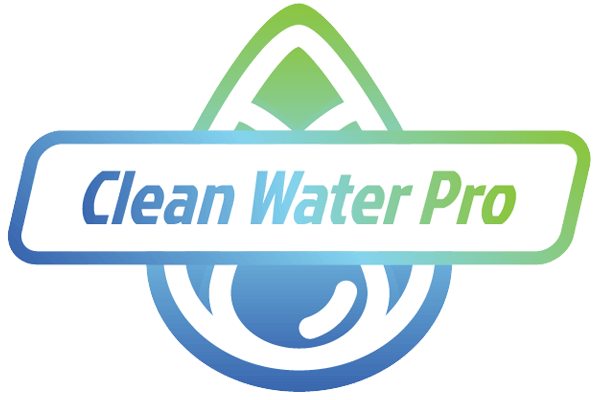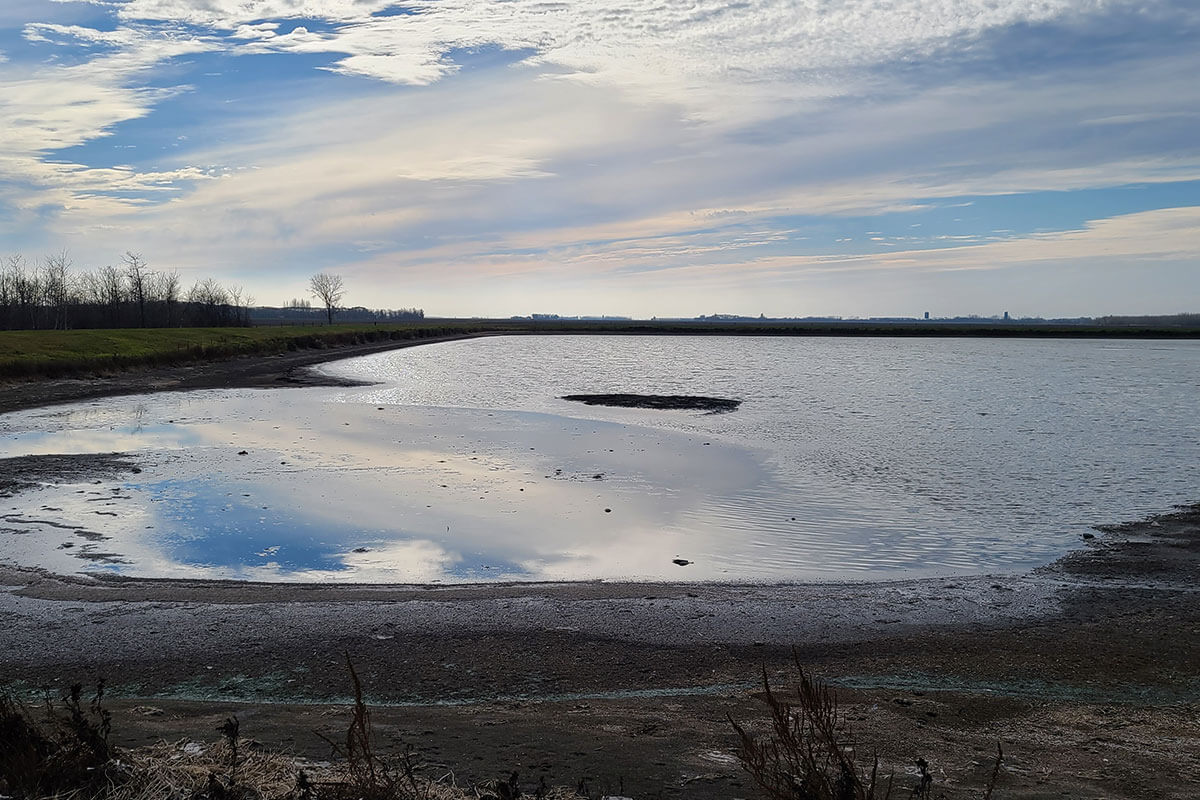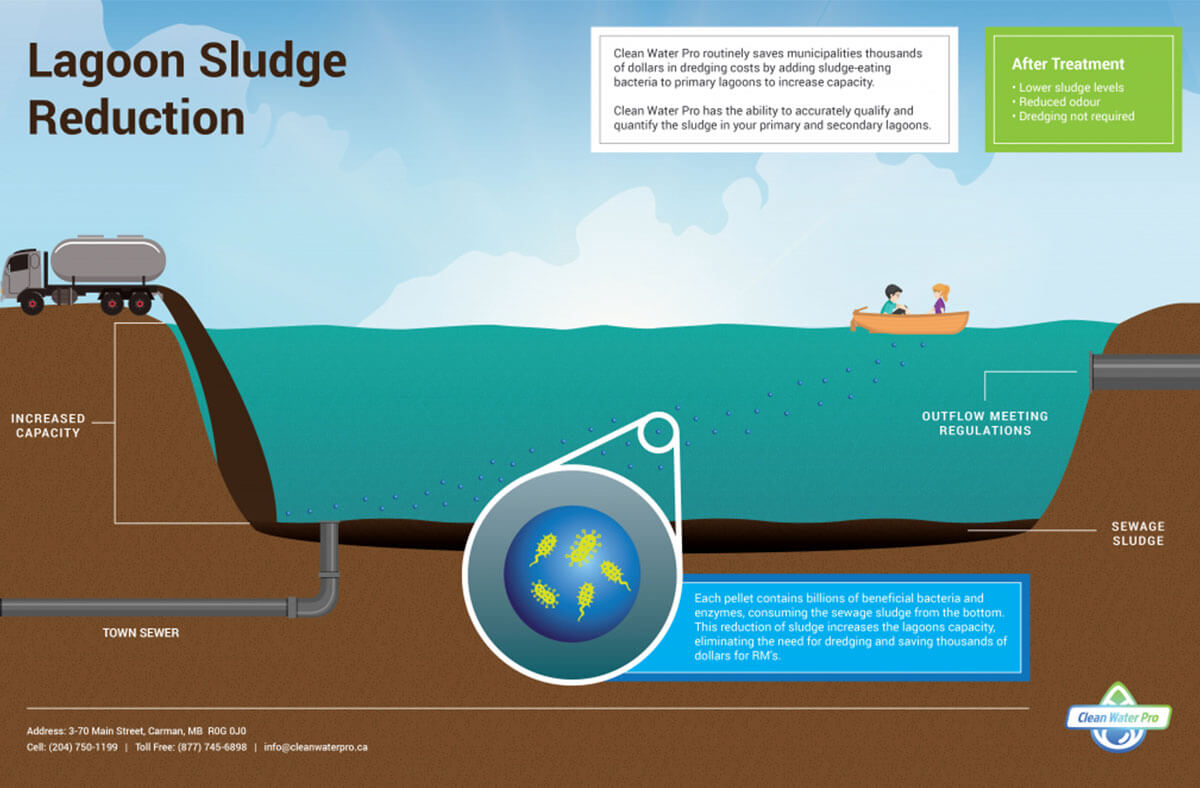Why should rural municipalities be concerned about the sludge levels in their sewage lagoons?
Many towns have outgrown the capacity of their current sewage lagoon — communities with recent population booms or older lagoons are experiencing sludge levels rising faster than expected. Unfortunately, excessively high sludge levels make it difficult for outdoor lagoons to function correctly.
Strict new guidelines for releasing lagoon effluent into the natural environment have greatly burdened public works managers. Increased sludge levels are a problem. As higher sludge creates a shortage of space in the wastewater cell, the only remaining solution for the public works manager is to dredge the cell to remove the sludge, which can be costly.
What Can Be Done to Reduce Sludge Levels in a Sewage Lagoon?
Aeration. The main advantage of a properly aerated lagoon system is reducing the need for frequent sludge removal. Since a large portion of municipal wastewater consists of biodegradable organic carbon matter, much of the settled sludge in the lagoon can be quickly decomposed by active aerobic or oxygen using professionally concentrated beneficial bacteria. If sufficient oxygen is not present in the ponds, the sludge layer will not biodegrade quickly enough to keep the sludge levels manageable. Aeration will provide much-needed dissolved oxygen to assist the aerobic bacteria in digesting the organics in the cell. Aeration can help promote evaporation, reducing the effluent required to release.
Bacteria treatments. The application of environmentally friendly bacteria and enzymes is beneficial because it works to decompose the organic carbon matter substantially. Several tons of sludge per acre are removed in a single season by adding aggressive bacteria treatments to the cells at a considerably lower cost than dredging.
Dredging and sludge removal. Extremely difficult and expensive. Ferric chloride or aluminum sulphate is often added to lagoon ponds to bind with phosphorus suspended in the water. These heavy metals make sludge removal even more expensive for the municipality, requiring it all to be transferred by truck to a suitable landfill site capable of receiving heavy metals.
Recommendations for Operating Wastewater Sewage Lagoons
- Closely monitor the sludge levels in your lagoon or have them professionally measured.
- Reduce the amount of sludge by installing a combination of coarse and fine bubble aeration in your primary lagoon and fine bubble aeration in your secondary cells.
- Treat your lagoon aggressively with concentrated, professional-grade, environmentally friendly beneficial bacteria and enzymes. *This recommendation is inexpensive compared to the costs of expansion, dredging, or paying fines.
Benefits From Employing the Combination of Aeration, Bacteria, and Enzymes
- Increases your lagoon capacity by dramatically reducing the sludge levels in your lagoon ponds. Up to 4-8 inches of sludge reduction in the primary cell over the course of 20 weeks of intensive treatment.
- Saves thousands by avoiding the expense of dredging and trucking hundreds of loads of sludge out of your lagoon.
- Reduces odour. Increased odour can be undesirable, especially in your primary or facultative pond, where the most anaerobic decomposition occurs.
- Adding bacteria and enzymes will not damage the lagoon liners or other infrastructure, and they are environmentally safe.
Our precise mapping system allows us strategically pinpoint high-sludge areas in your lagoon. Our Wastewater Lagoon Sludge Reduction program explicitly targets these areas to manage troubled areas actively. Talk to us today to find out more!


